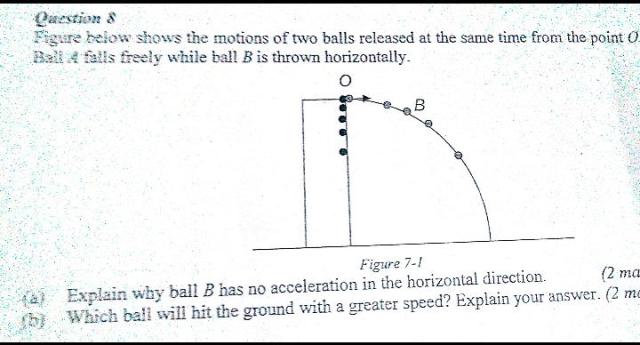Can someone help me?
2020-08-24 5:25 pm

回答 (1)
2020-08-24 6:51 pm
✔ 最佳答案
(a)This is because there is no force acting on ball B in the horizontal direction as only gravitation force is acting on ball B.
(b)
Ball B would hit the ground with a greater speed.
Consider the vertical motions of the two balls. Both of them are experienced gravitation acceleration and thus they hit the ground with equal vertical components of speed.
As the horizontal speed of ball A is equal to zero, the speed of when ball A hits the ground is equal to the vertical component of its speed.
The horizontal motion of ball B is a uniform velocity motion. The final horizontal component of speed is equal to its initial horizontal component of speed. When ball B hits the ground, its speed is the vector sum of the vertical and horizontal components of its speed. Such vector sum must be greater than the vertical component. Hence, ball B will hit the ground with a greater speed.
收錄日期: 2021-04-24 08:02:48
原文連結 [永久失效]:
https://hk.answers.yahoo.com/question/index?qid=20200824092559AAbO0GK
